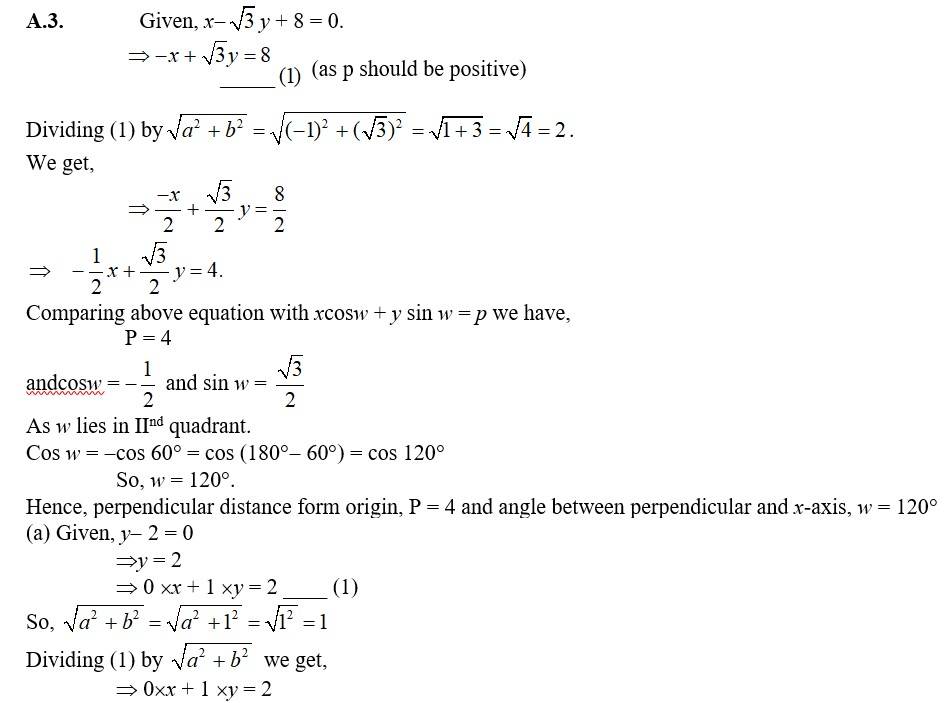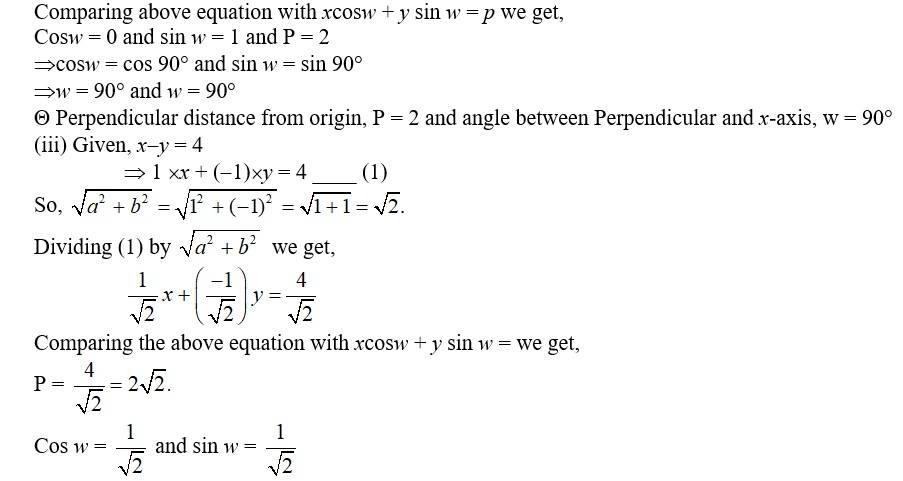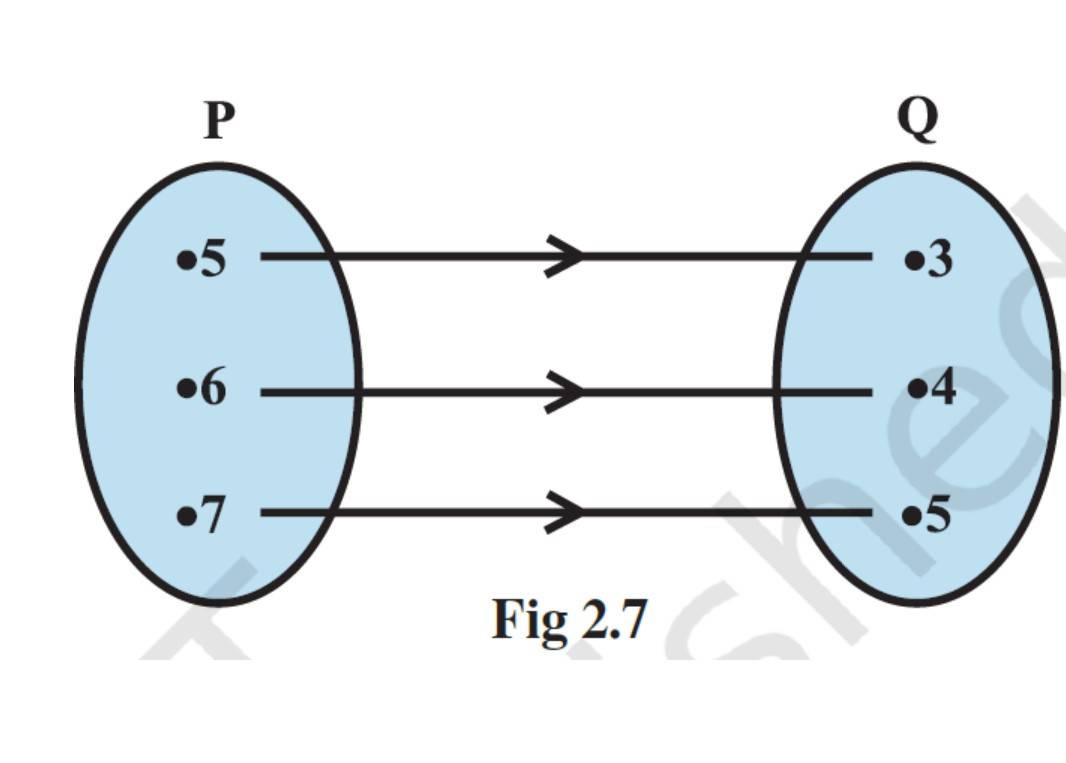Ncert Solutions Maths class 11th
Get insights from 1.6k questions on Ncert Solutions Maths class 11th, answered by students, alumni, and experts. You may also ask and answer any question you like about Ncert Solutions Maths class 11th
Follow Ask QuestionQuestions
Discussions
Active Users
Followers
New answer posted
4 months agoContributor-Level 10
16. Given, R = { (x, x+5): x {0,1,2,3,4,5}
= { (0,0+5), (1,1+5), (2,2+5), (3,3+5), (4,4+5), (5,5+5)}
= { (0,5), (1,6), (2,7), (3,8), (4,9), (5,10)}
So, domain of R= {0,1,2,3,4,5}
range of R= {5,6,7,8,9,10}
New answer posted
4 months agoContributor-Level 10
15. Given, A= {1,2,3,4,6}
R= { (a, b): a, b A, b is exactly divisible by a}
(i) R= { (1,1), (1,2), (1,3), (1,4), (1,6), (2,2), (2,4), (2,6), (3,3), (3,6), (4,4), (6,6)}
(ii) Domain of R= {1,2,3,4,6}
(iii) Range of R= {1,2,3,4,6}
New answer posted
4 months agoContributor-Level 10


As w lies in IVth quadrant
Cos w = cos 45° and sin w = - sin 45°
= cos (360°- 45°) = sin (360°- 45°)
= cos 315° &nbs
New answer posted
4 months agoContributor-Level 10
14. As R is a relation from set P to Q.
(i) R = { (x, y): x – 2 = y ; 5 ≤ x ≤ 7}
(ii) R = { (5,3), (6,4), (7,5)}
Domain of R= {5,6,7}
range of R= {3,4,5}
New answer posted
4 months agoContributor-Level 10
38. (i) Given, 3x + 2y 12 = 0.
3x + 2y = 12
Dividing both sides by 12 we get,
Comparing the above equation with = we get, x-intercept, a = 4 and y-intercept b = 6.
(ii) Given, 4x - 3y = 6
Dividing the both sides by 6.
Comparing above equation by we get, x-intercept a = and y-intercept, b = -2
(iii) Given, 3y + 2 = 0.
3y = -2
As the equation of line is of form y = constant, it is parallel to x-axis and has no x-intercept.
y-intercept = -
New answer posted
4 months agoContributor-Level 10
13. Given, A= {1,2,3,5}
B= {4,6,9}
R= { (x, y) : the difference of x & y is odd; x A, y B}.
= { (x, y):|x – y| is odd and x A, y B}
= { (1,4), (1,6), (2,9), (3,4), (3,6), (5,4), (5,6)}.

New answer posted
4 months agoContributor-Level 10
12. Given, R = { (x, y): y = x + 5, x is a natural number less than 4; x, y N}
= { (x, y): y = x + 5; x, y N and x < 4}.
= { (1,1+5), (2,2+5), (3,3+5)}
= { (1,6), (2,7), (3,8)}
So, domain of R = {1,2,3}
range of R = {6,7,8}
New answer posted
4 months agoContributor-Level 10
11. Given, A = {1,2,3, …, 14}
R = { (x, y): 3x – y = 0; x, y A}
= { (x, y): 3x = y; x, y A}.
= { (1,3), (2,6), (3,9), (4,12)}
Domain of R is the set of all the first elements of the ordered pairs in R
So, domain of R= {1,2,3,4}
Codomain of R is the whole set A.
So, codomain of R= {1,2,3, …, 14}
Range of R is the set of all the second elements of the ordered pains in R.
So, range of R= {3,6,9,12}
New question posted
4 months agoNew answer posted
4 months agoContributor-Level 10
Exercise 9.3
37. (i) Given, x + 7y = 0.
7y = -x
y = x + 0.
Comparing the above equation with y = mx + c we get, slope, m = - and c = 0, y-intercept
(ii) Given, 6x + 3y - 5 = 0
3y = -6x + 5
y = - x + = -2x +
Comparing the above equation with y = mx + c we get, slope, m = -2 and , y-intercept
(iii) Given, y = 0
y = 0xx + 0
Comparing the above equation with y = mx + c we get, Slope, m = 0 and c = 0, y-intercept.
Taking an Exam? Selecting a College?
Get authentic answers from experts, students and alumni that you won't find anywhere else
Sign Up on ShikshaOn Shiksha, get access to
- 65k Colleges
- 1.2k Exams
- 687k Reviews
- 1800k Answers
